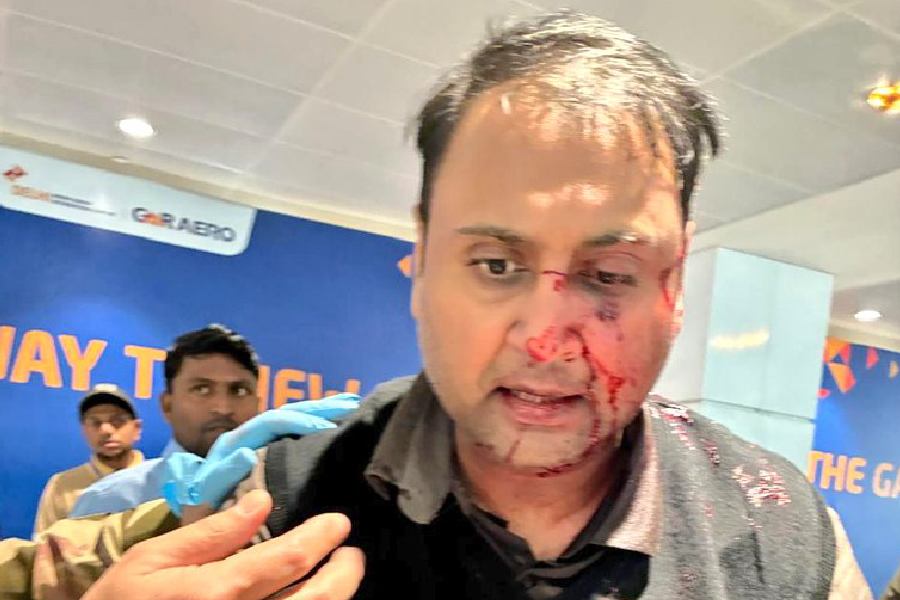
In the 5th century BC, Herodotus, the Greek historian whom posterity knows as the "father of history", wrote about Indian iron. The iron that Herodotus wrote about tipped the arrows that Indian soldiers used against intruders. Archaeologists estimate that iron was in use in ancient India (in the eastern Vindhyas and the central Gangetic plain) from as early as 1800 BC. By the Gupta era, wrought iron production was advanced enough to create the famous Iron Pillar of Delhi - a pillar known not only for its exquisite workmanship but also for its ability to resist corrosion in nearly two millennia of constant exposure to the elements.
Likewise, ancient Indian steel, too, was prized very highly. According to American historian, Will Durant, King Porus is said to have selected 30 pounds of steel (instead of gold or silver) as gift for Alexander. Indian steel - also called 'crucible steel' or 'wootz steel' - was in great demand as the material with which legendary swords were forged. Foreign geographers of the 11th and 12th centuries, such as the Moroccan geographer, Ash-Sharif al-Idrisi, and the Venetian geographer, Giovanni Ramusio, were all praise for Indian swords. Al-Idrisi described how "Hindoos excel in the manufacture of iron, and in the preparation of those ingredients along with which it is fused to obtain that kind of malleable iron, usually styled Indian steel." He also mentioned how their workshops produced "the most famous sabres in the world". Indian steel, particularly Indian swords, came to be known in Arabic as "Hundwániy".
What made Indian swords so special? These swords could bend at a 90 degree angle and immediately spring back to their former positions, yet their blades would be sharp enough to slice a falling bolt of silk and cut it in half. An icing on the cake was the fact that these were swords of spectacular beauty. Under the surface, wavy patterns crisscrossed in a unique design reminiscent of damask. According to anthropologist and archaeo-metallurgist Ann Feuerbach, Indian steel was originally shipped in the form of ingots to the Middle East and Syria; because of the Syrian connection, the swords made with this steel were also known as Damascus swords, whose properties derived from the special way in which the steel had been produced.
The Middle East traditionally served as a conduit between the East and the West, transmitting Indian work on mathematics to Europe, for example. But it decided to keep its familiarity with Indian swords to itself. The discretion fetched it a spectacular reward: hordes of invading European crusaders were roundly defeated by Saladin and his troops using these swords. The swords could cleave through a European helmet in a single stroke and suffer no damage. The invading armies were baffled by their encounter with the sharpest, strongest and yet most flexible swords and scimitars they had ever seen.
After the Crusades, these "Hundwániy" swords were introduced to Spain and Italy as "Ondanique", according to the most famous traveller of all, Marco Polo. Ramusio mentioned how a man who possessed a sword, or a mirror, made of ondanique, would regard it as a "precious jewel" because of its "surpassing value and excellence".
Indian steel-makers carefully guarded their metallurgical secrets. Westerners knew that to be able to make such swords themselves, they needed to know how to produce steel with the special qualities intrinsic to Indian steel. From the 17th to the 19th centuries, a number of Westerners tried to replicate the special properties - the strength, sharpness, and superplasticity - of Indian steel, but to no avail. These included Michael Faraday, better known for his contributions to electricity and magnetism and the discovery of benzene. He spent many years performing a series of experiments, adding alloys to iron in a fruitless attempt to replicate the structure and characteristics of Indian steel.
It was not till 2006 that scientists got a closer glimpse into the secrets of Indian steel. Crystallographer Peter Paufler and his team of researchers had access to some swords made with this steel. Using an electron microscope, and dipping the blades of the swords in hydrochloric acid, the team discovered that the underlying structure of the steel contained carbon nanotubes. Carbon nanotubes - for whose discovery three scientists got the Nobel Prize in 1996 - have a cylindrical structure with one-atom thick walls, are associated with remarkable degrees of thermal and electrical conductivity, and are used in a number of applications at the forefront of the still emerging field of nanotechnology, including bone tissue engineering, improving the tensile strength of fabrics and sports materials, and microscope probes. These nanotubes encased "nanowires" made of another hard material, cementite. According to the scientists, who published the results of their study in Nature, this combination of nanotubes and nanowires in the underlying structure of the steel used to make the swords was responsible for the swords' hardness, sharpness and flexibility.
The discovery of nanotubes in Indian swords may finally have provided scientists with a clue to their secret. Indian steel, which was manufactured in crucibles where iron was heated with burning leaves and wood, was heated to temperatures just high enough to preserve the impurities in the iron (such as vanadium) which then bonded with the carbon in the plant matter to form nanotubes. Paufler and his team hypothesize that these tubes could then have been filled with cementite, which would produce nanowires, accounting for the wiry, wave-like pattern on the swords. The alternation of hard cementite with softer steel in between could explain the strength and the flexibility of the swords, while the resistance of carbon nanotubes to acid had a role in the blades' legendary sharpness. Though scientists must use inference to guess the exact process by which Indian steel-makers and sword-smiths arrived at their results, this was not a one-off accident, but a technique which was replicated faultlessly by the steel-smiths over hundreds of years.
Ancient Indian metallurgists were thus the inadvertent pioneers of modern nanotube research, forging swords that fired the imagination of warriors and scientists all over the world for centuries. How were these remarkable skills lost to the world? In an unfortunate twist, the skill of making these sabres and swords died out in British India. According to Sir Richard Francis Burton and David Arnold, this was largely a matter of conscious policy; our British rulers realized the importance of iron and steel-making skills in the success of rebellions, particularly after the mutiny of 1857. They then instituted a series of measures, such as the Arms Act of 1878, to limit Indians' access to firearms while destroying the existing Damascene swords they could find. Mines were forcibly closed, particularly in mineral-rich regions like Rajasthan. Even the caste of miners became extinct and with it, their trade secrets. As the British eliminated the military might of princely states, they also eroded their capacity to mine and work metals. The constant vulnerability of the subcontinent to a series of foreign invaders may partly explain why much of the indigenous knowledge died out by the modern era.











